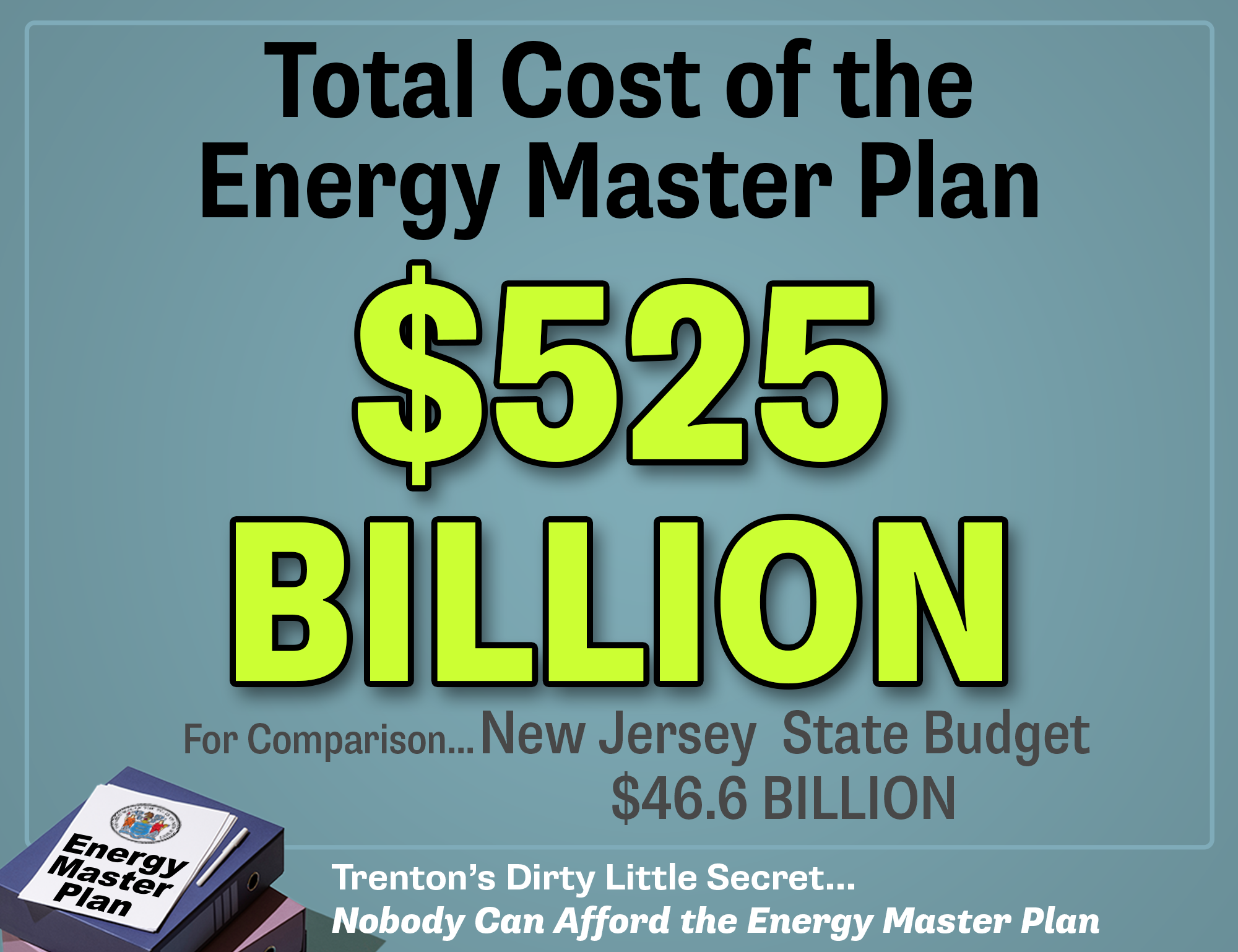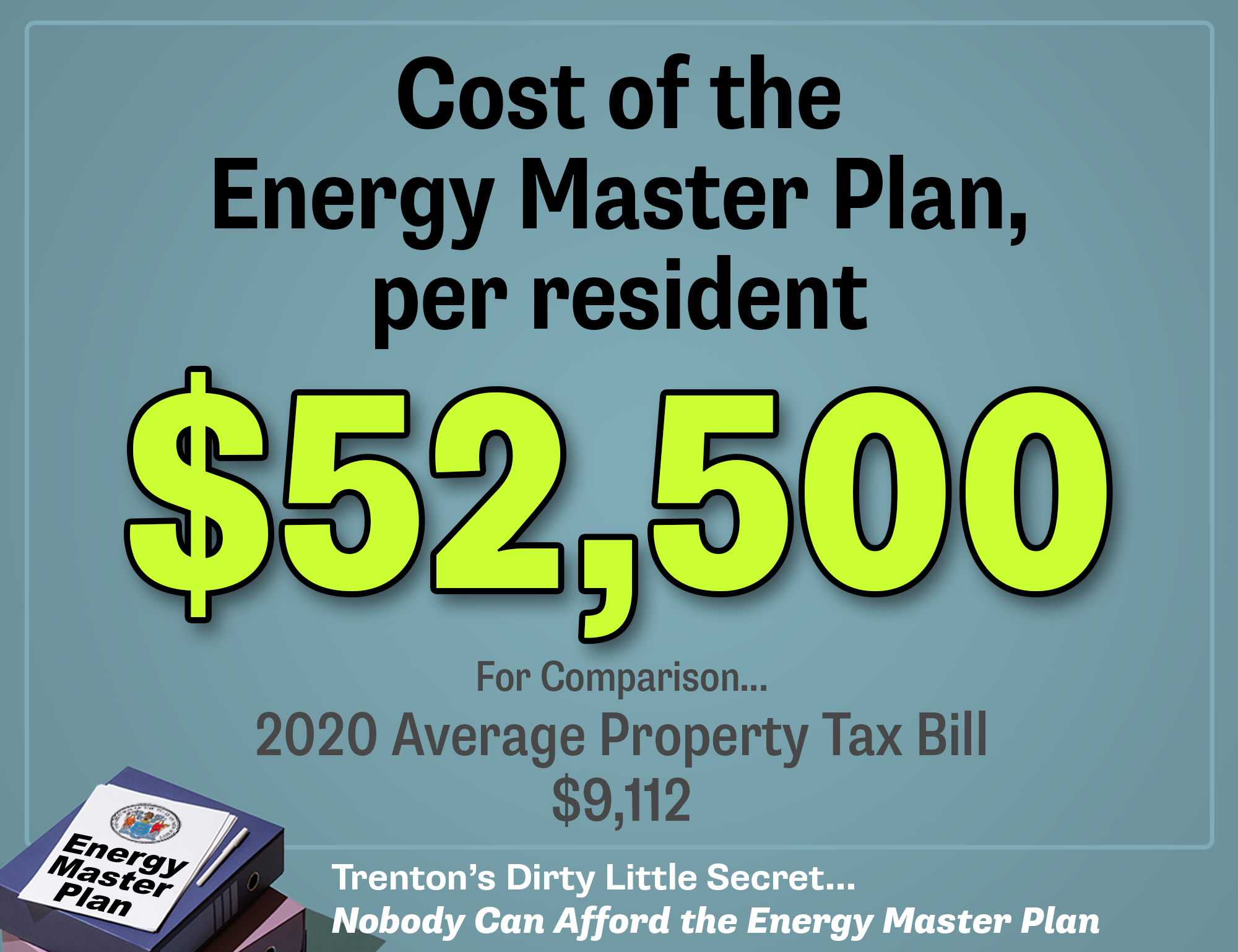
The goal may be noble, but serious questions have been raised about the Administration’s rush to implement the plan.
Not only will the EMP require scaling up new technologies, some of which has yet to be proven, the cost impacts on businesses, families, and local governments will be significant. Moreover, the EMP’s massive subsidies and mandates will place the burden of those costs most heavily on the economically disadvantaged, while showering the most benefits on the wealthy.
Ironically, the EMP’s climate benefits will be negligible: even if New Jersey reduced its carbon emissions to zero tomorrow; it would have no measurable impact on world climate. One thing the Murphy Administration has been silent on is the EMP’s cost.
When originally drafted, the Energy Master Plan was to include a cost analysis along with the document we know today. This was eliminated with no explanation or justification.
With the administration failing to be transparent, Affordable Energy for New Jersey worked with renowned energy policy expert Dr. Jonathan Lesser of Continental Economics to calculate what New Jersey residents should expect to pay for the Energy Master Plan, looking at each of the Energy Master Plan’s seven broad strategies and assessing costs.
The reality that New Jerseyans will have to face is daunting


Energy Master Plan Proposals vs. New Jersey Realities
While performing this analysis, AENJ found that each EMP strategy involves significant costs for New Jersey residents. These policy white papers analyzes each of the EMP strategies in further detail.
New Jersey must adapt to Climate Change. But the cost of these adaptations must be part of a transparent public discussion so we aren’t forced to rely on technologies or adhere to policies that are not feasible, affordable,or reliable. We call on state and local leaders, the press, and everyone to participate in this discussion.
| EMP Proposed Strategy | New Jersey Reality | Estimated Actual Costs | WhitePaper |
|---|---|---|---|
| #1 Reduce energy consumption and emissions in the transportation sector. | Meeting the Electric Vehicle Mandate Will Cost Much More Than Assumed. | $176 Billion | Read More |
| #2 Accelerate deployment of renewable energy and distributed energy resources. | Electric Bills Will Skyrocket | $155 Billion | Read More |
| #3 Maximize energy efficiency and conservation, and reduce peak demand. | Energy Efficiency and Conservation Mandates Will Reduce Energy Consumption Less than Claimed and Cost Much More | $106 Billion | Read More |
| #4 Reduce energy consumption and emissions from the building sector. | Electrifying New Jersey Homes, Apartments, and Businesses Will Be Hugely Expensive | $65 Billion | Read More |
| #5 Decarbonize and modernize New Jersey’s energy system | Decarbonizing and Modernizing New Jersey’s Energy System Will Require Customers to Pay More for Electricity When They Most Need It | $12.5 Billion | Read More |
| #6 Support community energy planning and action with an emphasis on encouraging and supporting participation by low- and moderate-income and environmental justice communities. | Community Energy Plans and a Smorgasbord of Community Subsidies | $1.5 Billion | Read More |
| #7 Expand the clean energy innovation economy. | Subsidies for the Few | $9 Billion | Read More |
Total Estimated Cost | $525 Billion |
Take A Stand For
Energy Affordability
The New Jersey Energy Master Plan could have devastating consequences for New Jersey Families and Businesses for decades to come.
You can make your voice heard by filling out the form to the right and take a stand for energy affordability.